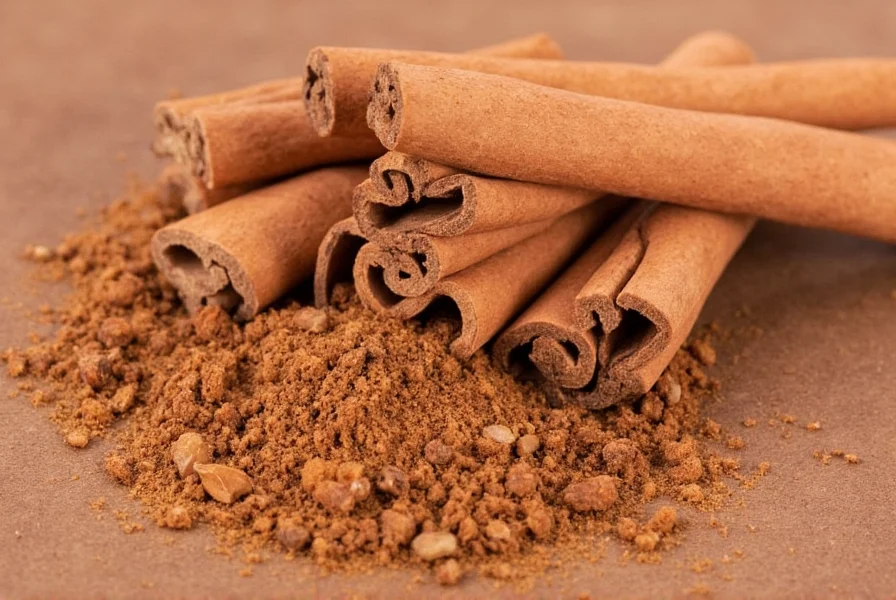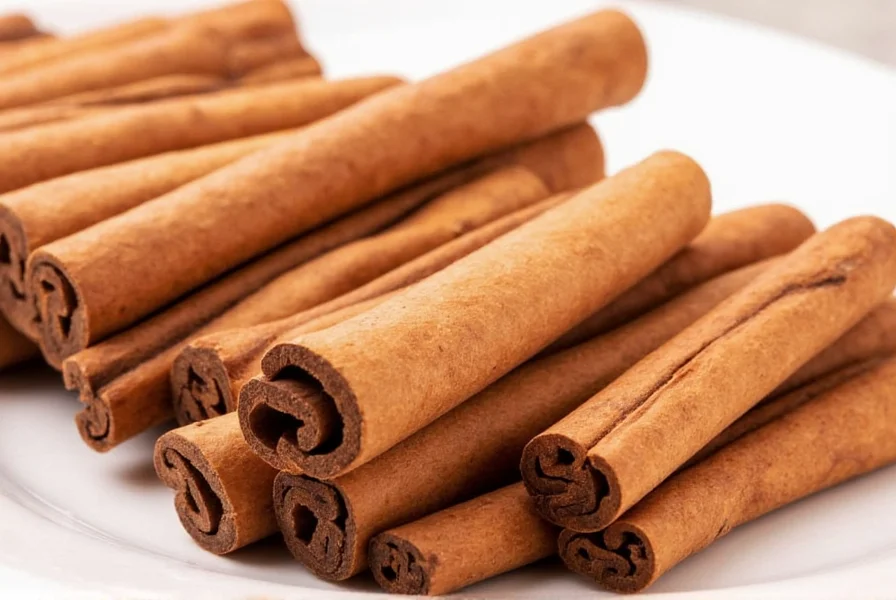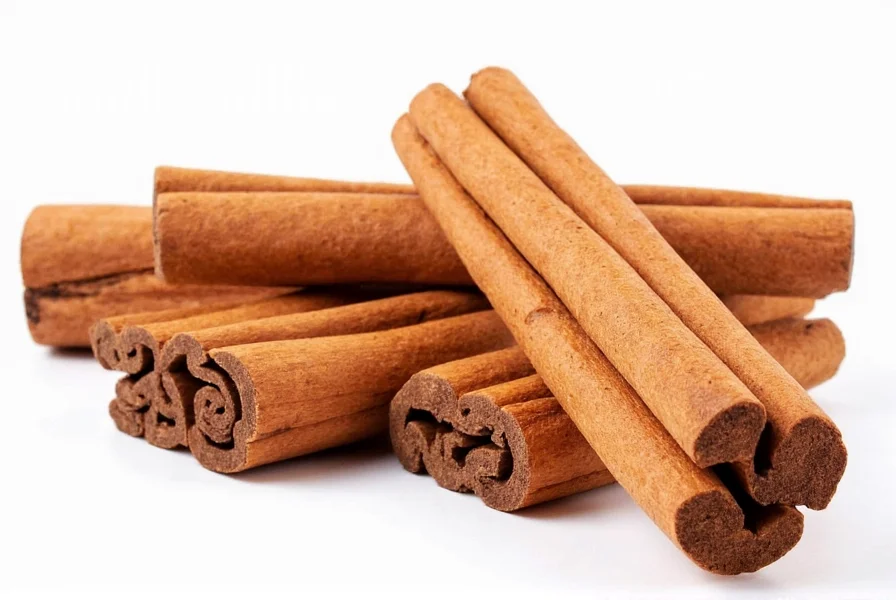Cinnamon has graced kitchens and apothecaries for thousands of years, valued for its distinctive flavor and potential therapeutic properties. This versatile spice comes from the inner bark of trees in the Cinnamomum family, which curls into the familiar quills or sticks as it dries. Understanding the different cinnamon varieties, their unique characteristics, and proper usage can significantly enhance both culinary creations and wellness routines.
Understanding Cinnamon Varieties
Not all cinnamon is created equal. The market primarily offers two distinct types that differ in origin, appearance, flavor profile, and chemical composition.
| Characteristic | Ceylon Cinnamon | Cassia Cinnamon |
|---|---|---|
| Origin | Sri Lanka, India, Madagascar | China, Indonesia, Vietnam |
| Appearance | Multiple thin, delicate layers forming a tight scroll; light tan color | Single thick, hard layer; dark reddish-brown color |
| Taste Profile | Mild, sweet, complex with citrus notes | Strong, pungent, more intense heat |
| Coumarin Content | Very low (approximately 0.04%) | High (approximately 3-8%) |
| Market Availability | Less common, more expensive | Most widely available, more affordable |
Nutritional Profile and Health Benefits
Cinnamon contains numerous bioactive compounds, including cinnamaldehyde (responsible for its distinctive flavor and aroma), along with antioxidants like polyphenols. Research suggests several potential health benefits associated with regular cinnamon consumption.
Studies indicate that cinnamon may help improve insulin sensitivity and lower blood sugar levels, making it potentially beneficial for people with type 2 diabetes or insulin resistance. The spice appears to mimic insulin and enhance glucose uptake by cells. However, these effects are modest and shouldn't replace medical treatment for diabetes.
The anti-inflammatory properties of cinnamon compounds may help reduce chronic inflammation, which is linked to numerous health conditions including heart disease and neurodegenerative disorders. Additionally, cinnamon's antioxidant capacity ranks among the highest of all spices, potentially protecting the body from oxidative damage.

Culinary Applications and Flavor Pairing
Cinnamon's warm, sweet flavor profile makes it incredibly versatile in both sweet and savory applications. Understanding how to use each variety properly can elevate your cooking significantly.
Ceylon cinnamon's delicate flavor works beautifully in dishes where you want a subtle cinnamon note without overwhelming other ingredients. It shines in custards, delicate pastries, and beverages like chai tea. Professional bakers often prefer Ceylon for intricate desserts where flavor balance is crucial.
Cassia cinnamon's robust flavor stands up well to long cooking times and bold ingredients. It's the traditional choice for cinnamon rolls, apple pie, and other baked goods where cinnamon should be a prominent flavor. In savory applications, Cassia works well in spice rubs for meats, curries, and Middle Eastern dishes like tagines.
When substituting one for the other, remember that Cassia is stronger, so you'll typically need less. For most recipes calling for "cinnamon," Cassia is assumed unless specified otherwise.
Selecting and Storing Quality Cinnamon
Choosing high-quality cinnamon and storing it properly preserves its flavor and potential health benefits. When shopping for cinnamon sticks, look for tightly rolled quills with a uniform color. For ground cinnamon, check that it's fine and consistent in texture without clumps.
Reading labels carefully is essential for identifying cinnamon types. In the United States, most supermarket cinnamon is Cassia unless specifically labeled as Ceylon or "true cinnamon." Specialty spice shops and online retailers are more likely to carry authentic Ceylon cinnamon.
Proper storage maintains cinnamon's potency. Keep cinnamon in an airtight container away from light, heat, and moisture. Ground cinnamon retains optimal flavor for about 6 months, while cinnamon sticks can maintain quality for up to a year. For extended storage, consider keeping cinnamon in the freezer, which preserves volatile oils longer.

Safety Considerations and Consumption Guidelines
While cinnamon offers potential health benefits, certain safety considerations are important, particularly regarding coumarin content. Coumarin, found in much higher concentrations in Cassia cinnamon, can cause liver damage in sensitive individuals when consumed in large amounts over time.
The European Food Safety Authority recommends a maximum daily intake of 0.1 mg of coumarin per kilogram of body weight. For a 130-pound person, this translates to approximately 1 teaspoon of Cassia cinnamon daily. Ceylon cinnamon contains negligible coumarin, making it safer for regular consumption.
People with liver conditions should exercise particular caution with Cassia cinnamon. Those using blood-thinning medications should consult their healthcare provider before consuming large amounts of cinnamon, as it may interact with these medications.
Common Misconceptions About Cinnamon
Several myths persist about cinnamon that deserve clarification. One widespread misconception is that all cinnamon offers identical health benefits. Research shows significant differences in bioactive compounds between varieties, particularly regarding coumarin content.
Another common misunderstanding is that cinnamon can cure diabetes. While studies show modest blood sugar improvements, cinnamon should never replace prescribed diabetes medications. It may serve as a complementary approach but requires medical supervision.
Many believe that the cinnamon challenge (consuming a spoonful of dry cinnamon without water) is harmless fun. This practice can cause serious respiratory issues, including aspiration pneumonia, and should be avoided.
Practical Takeaways for Cinnamon Consumers
Understanding the differences between cinnamon varieties empowers you to make informed choices based on your needs. For regular culinary use, especially in larger quantities, Ceylon cinnamon offers a safer profile due to its minimal coumarin content. When shopping, check labels carefully as most supermarket cinnamon is Cassia unless specified otherwise.
For therapeutic purposes, consult with a healthcare provider before using cinnamon as a supplement, particularly if you have liver conditions or take medications. Remember that while cinnamon shows promise in research, it's not a miracle cure and should be part of a balanced diet rather than relied upon for medical treatment.
Frequently Asked Questions
What's the main difference between Ceylon and Cassia cinnamon?
The primary difference lies in their coumarin content and flavor profile. Ceylon cinnamon (true cinnamon) has multiple thin layers, a lighter color, sweeter taste, and very low coumarin levels. Cassia cinnamon has a single thick layer, darker color, stronger flavor, and significantly higher coumarin content, which can be harmful in large amounts over time.
Can cinnamon help manage blood sugar levels?
Research suggests cinnamon may improve insulin sensitivity and modestly lower blood sugar levels, particularly for people with type 2 diabetes. However, the effects are relatively small and should not replace prescribed diabetes medications. Anyone with diabetes considering cinnamon supplementation should consult their healthcare provider first.
How much cinnamon is safe to consume daily?
For Cassia cinnamon, the European Food Safety Authority recommends no more than 0.1 mg of coumarin per kilogram of body weight daily, which equates to approximately 1 teaspoon for most adults. Ceylon cinnamon contains negligible coumarin, making it safer for regular consumption in larger amounts. People with liver conditions should be particularly cautious with Cassia cinnamon.
How can I tell if I'm buying Ceylon or Cassia cinnamon?
Check the label carefully - authentic Ceylon cinnamon will be specifically labeled as such. In the United States, most supermarket cinnamon is Cassia unless specified otherwise. Ceylon cinnamon sticks have multiple thin, papery layers that form a tight scroll, while Cassia sticks are thicker, harder, and consist of a single layer. Ceylon is typically more expensive than Cassia.











 浙公网安备
33010002000092号
浙公网安备
33010002000092号 浙B2-20120091-4
浙B2-20120091-4